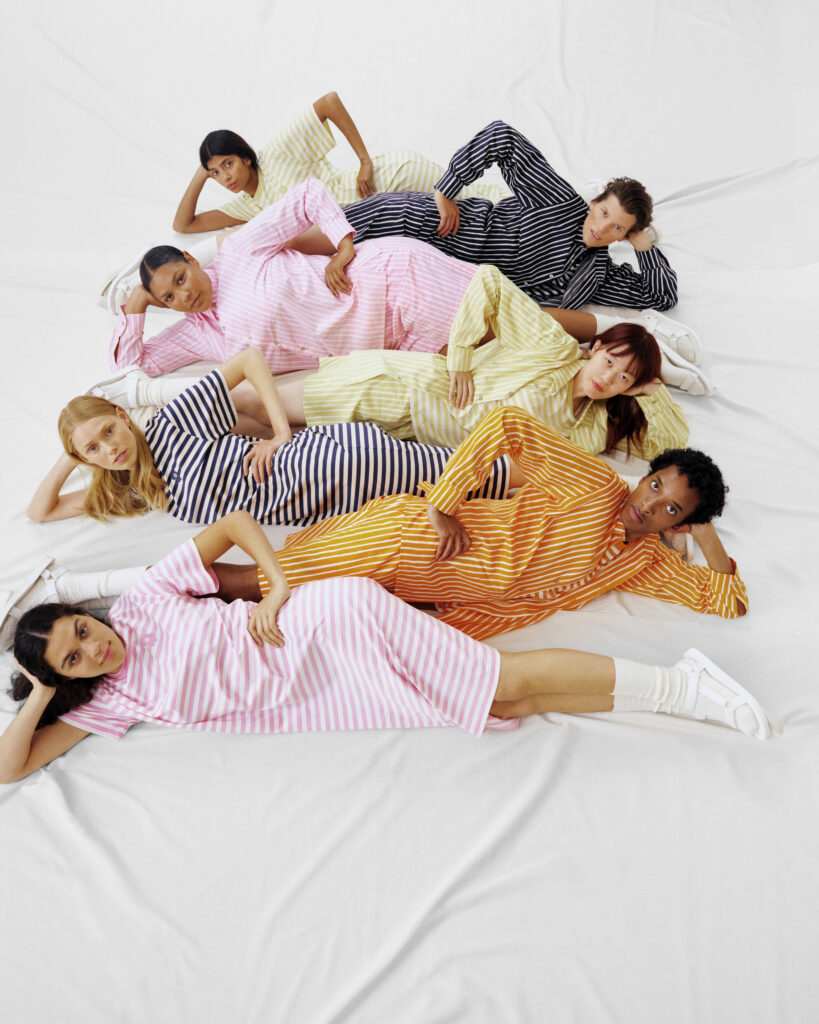For us at Marimekko, longevity means the combination of timeless esthetics and high quality. In 2023, the percentage of products subject to claims was 0.4 percent.
One of the key factors behind ensuring the high quality is Marimekko’s own textile laboratory, where over 5,000 tests are performed each year on different materials. In practice, this means numerous tests for each material and product. Materials can be tested for shrinkage, color fastness, abrasion resistance, and pilling, among other things.
Our textile laboratory works in close collaboration with our printing factory. Both the textile printing factory and the textile laboratory are located in Helsinki, Finland, in connection to our headquarters. This allows a seamless collaboration between different units.
All base fabrics are tested before being introduced into production and accepted into collections. In addition to material testing, we also test new products through everyday use before they are incorporated into our collections. This ensures that the products can bring joy from one consumer to the next.
Also new material innovations must meet our high quality standards
Material choices play an important role in minimizing a products’ environmental impact. The results of our new material strategy have started to become visible in our collections during the past few years when, for example, the share of recycled and organic materials has increased.
“The goal of our material strategy is to ensure the transition toward organic and recycled materials, for instance, while maintaining timeless design and longevity, which always has been in Marimekko’s DNA. High quality is at the heart of this. New materials need to meet the same high quality standards as all Marimekko materials and products,” says Marimekko’s Quality Manager Hanna Raatikka.
“The fact that we have a textile laboratory right here at our headquarters in Herttoniemi, Helsinki, ensures close collaboration with different functions. Many innovations, such as new textile materials and plant-based dyes, require close collaboration with our own printing factory, product development, design, sustainability team, quality team, and textile laboratory”, Raatikka continues.
